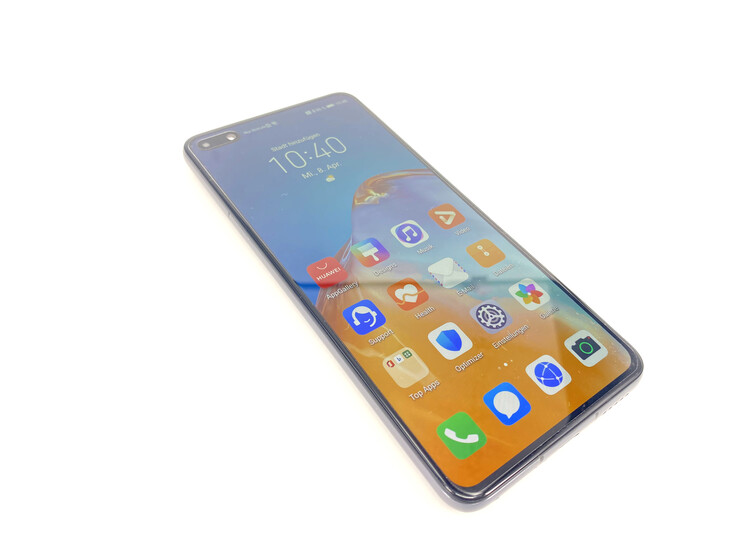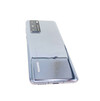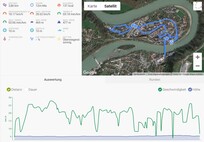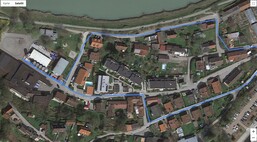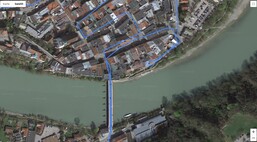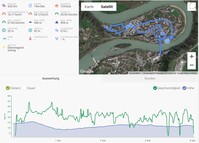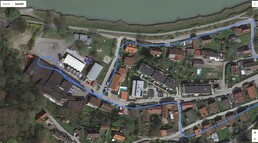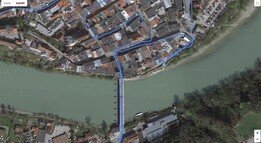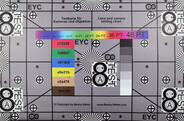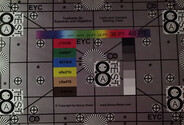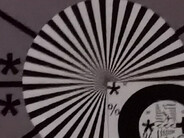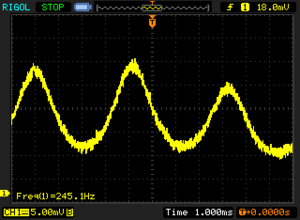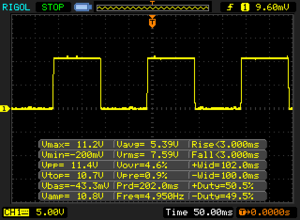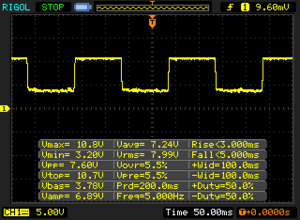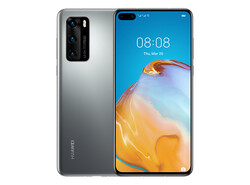Breve Análise do Smartphone Huawei P40 – Venda difícil apesar de sua ótima câmera
Competing Devices
Avaliação | Data | Modelo | Peso | Unidade | Size | Resolução | Preço |
|---|---|---|---|---|---|---|---|
| 87.4 % v7 (old) | 04/2020 | Huawei P40 Kirin 990 5G, Mali-G76 MP16 | 175 g | 128 GB UFS 3.0 Flash | 6.10" | 2340x1080 | |
| 87.7 % v7 (old) | 03/2020 | Samsung Galaxy S20 Exynos 990, Mali-G77 MP11 | 163 g | 128 GB UFS 3.0 Flash | 6.20" | 3200x1440 | |
| 86.4 % v7 (old) | 04/2019 | Huawei P30 Kirin 980, Mali-G76 MP10 | 165 g | 128 GB UFS 2.1 Flash | 6.10" | 2340x1080 | |
| 86.5 % v7 (old) | 09/2019 | Apple iPhone 11 A13 Bionic, A13 Bionic GPU | 194 g | 64 GB SSD | 6.10" | 1792x828 | |
| 85.8 % v7 (old) | 10/2019 | OnePlus 7T SD 855+, Adreno 640 | 190 g | 128 GB UFS 3.0 Flash | 6.55" | 2400x1080 | |
| 88.6 % v6 (old) | 08/2019 | Xiaomi Mi 9T Pro SD 855, Adreno 640 | 191 g | 128 GB UFS 2.1 Flash | 6.39" | 2340x1080 |
Os Top 10
» Os Top 10 Portáteis Multimídia
» Os Top 10 Portáteis de Jogos
» Os Top 10 Portáteis Leves para Jogos
» Os Top 10 Portáteis Acessíveis de Escritório/Empresariais
» Os Top 10 Portáteis Premium de Escritório/Empresariais
» Os Top 10 dos Portáteis Workstation
» Os Top 10 Subportáteis
» Os Top 10 Ultrabooks
» Os Top 10 Conversíveis
» Os Top 10 Tablets
» Os Top 10 Smartphones
» A melhores Telas de Portáteis Analisadas Pela Notebookcheck
» Top 10 dos portáteis abaixo dos 500 Euros da Notebookcheck
» Top 10 dos Portáteis abaixo dos 300 Euros
Size Comparison
| Networking | |
| iperf3 transmit AX12 | |
| Huawei P40 | |
| Samsung Galaxy S20 | |
| Huawei P30 | |
| Apple iPhone 11 | |
| OnePlus 7T | |
| Xiaomi Mi 9T Pro | |
| iperf3 receive AX12 | |
| Huawei P40 | |
| Samsung Galaxy S20 | |
| Apple iPhone 11 | |
| Huawei P30 | |
| OnePlus 7T | |
| Xiaomi Mi 9T Pro | |
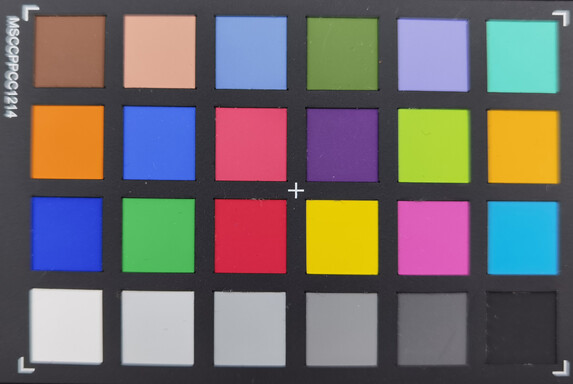
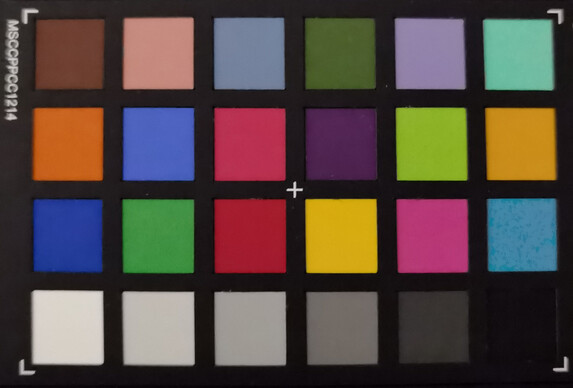
| |||||||||||||||||||||||||
iluminação: 94 %
iluminação com acumulador: 583 cd/m²
Contraste: ∞:1 (Preto: 0 cd/m²)
ΔE ColorChecker Calman: 3.03 | ∀{0.5-29.43 Ø4.78}
ΔE Greyscale Calman: 2 | ∀{0.09-98 Ø5}
129.7% sRGB (Calman 2D)
Gamma: 2.301
CCT: 6621 K
| Huawei P40 AMOLED, 2340x1080, 6.1" | Samsung Galaxy S20 AMOLED, 3200x1440, 6.2" | Huawei P30 OLED, 2340x1080, 6.1" | Apple iPhone 11 IPS, 1792x828, 6.1" | OnePlus 7T AMOLED, 2400x1080, 6.6" | Xiaomi Mi 9T Pro AMOLED, 2340x1080, 6.4" | |
|---|---|---|---|---|---|---|
| Screen | 14% | 17% | 34% | -9% | 7% | |
| Brightness middle (cd/m²) | 583 | 745 28% | 561 -4% | 679 16% | 693 19% | 594 2% |
| Brightness (cd/m²) | 593 | 740 25% | 560 -6% | 671 13% | 703 19% | 607 2% |
| Brightness Distribution (%) | 94 | 97 3% | 95 1% | 93 -1% | 96 2% | 91 -3% |
| Black Level * (cd/m²) | 0.68 | |||||
| Colorchecker dE 2000 * | 3.03 | 2.67 12% | 1.5 50% | 0.8 74% | 3.42 -13% | 1.51 50% |
| Colorchecker dE 2000 max. * | 5.33 | 4.52 15% | 2.5 53% | 2.4 55% | 6.12 -15% | 4.27 20% |
| Greyscale dE 2000 * | 2 | 2 -0% | 1.8 10% | 1.1 45% | 3.3 -65% | 2.6 -30% |
| Gamma | 2.301 96% | 2.092 105% | 2.2 100% | 2.24 98% | 2.265 97% | 2.219 99% |
| CCT | 6621 98% | 6240 104% | 6512 100% | 6610 98% | 6799 96% | 6390 102% |
| Contrast (:1) | 999 |
* ... menor é melhor
Cintilação da tela / PWM (modulação por largura de pulso)
| Tela tremeluzindo/PWM detectado | 245 Hz | ||
A luz de fundo da tela pisca em 245 Hz (pior caso, por exemplo, utilizando PWM) . A frequência de 245 Hz é relativamente baixa, portanto, usuários sensíveis provavelmente notarão cintilação e sentirão fadiga ocular na configuração de brilho indicada e abaixo. [pwm_comparison] Em comparação: 53 % de todos os dispositivos testados não usam PWM para escurecer a tela. Se PWM foi detectado, uma média de 8111 (mínimo: 5 - máximo: 343500) Hz foi medida. | |||
Exibir tempos de resposta
| ↔ Tempo de resposta preto para branco | ||
|---|---|---|
| 6 ms ... ascensão ↗ e queda ↘ combinadas | ↗ 3 ms ascensão | |
| ↘ 3 ms queda | ||
| A tela mostra taxas de resposta muito rápidas em nossos testes e deve ser muito adequada para jogos em ritmo acelerado. Em comparação, todos os dispositivos testados variam de 0.1 (mínimo) a 240 (máximo) ms. » 17 % de todos os dispositivos são melhores. Isso significa que o tempo de resposta medido é melhor que a média de todos os dispositivos testados (20.2 ms). | ||
| ↔ Tempo de resposta 50% cinza a 80% cinza | ||
| 8 ms ... ascensão ↗ e queda ↘ combinadas | ↗ 3 ms ascensão | |
| ↘ 5 ms queda | ||
| A tela mostra taxas de resposta rápidas em nossos testes e deve ser adequada para jogos. Em comparação, todos os dispositivos testados variam de 0.165 (mínimo) a 636 (máximo) ms. » 19 % de todos os dispositivos são melhores. Isso significa que o tempo de resposta medido é melhor que a média de todos os dispositivos testados (31.6 ms). | ||
| PCMark for Android | |
| Work performance score (classificar por valor) | |
| Huawei P40 | |
| Samsung Galaxy S20 | |
| Huawei P30 | |
| OnePlus 7T | |
| Xiaomi Mi 9T Pro | |
| Média HiSilicon Kirin 990 5G (10628 - 14814, n=4) | |
| Work 2.0 performance score (classificar por valor) | |
| Huawei P40 | |
| Samsung Galaxy S20 | |
| Huawei P30 | |
| OnePlus 7T | |
| Xiaomi Mi 9T Pro | |
| Média HiSilicon Kirin 990 5G (8512 - 11509, n=4) | |
| AnTuTu v8 - Total Score (classificar por valor) | |
| Huawei P40 | |
| Samsung Galaxy S20 | |
| Média HiSilicon Kirin 990 5G (450373 - 527856, n=4) | |
| Jetstream 2 - 2.0 Total Score | |
| Média da turma Smartphone (23.8 - 387, n=152, últimos 2 anos) | |
| Apple iPhone 11 (Safari Mobile 13.0) | |
| OnePlus 7T (Chrome 76) | |
| Média HiSilicon Kirin 990 5G (55.6 - 70, n=4) | |
| Xiaomi Mi 9T Pro (Chrome 75) | |
| Huawei P40 (Huawei Browser 10.1) | |
| Samsung Galaxy S20 (Chrome 80) | |
| Huawei P30 (Chrome 73) | |
| JetStream 1.1 - Total Score | |
| Apple iPhone 11 (Safari Mobile 13.0) | |
| OnePlus 7T (Chrome 76) | |
| Média HiSilicon Kirin 990 5G (103.2 - 116.6, n=4) | |
| Huawei P40 (Huawei Browser 10.1) | |
| Huawei P30 (Chrome 73) | |
| Xiaomi Mi 9T Pro | |
| Samsung Galaxy S20 (Chrome 80) | |
| Speedometer 2.0 - Result 2.0 | |
| Média da turma Smartphone (15.2 - 643, n=126, últimos 2 anos) | |
| Apple iPhone 11 (Safari Mobile 13.0) | |
| OnePlus 7T (Chome 76) | |
| Média HiSilicon Kirin 990 5G (63 - 71.8, n=4) | |
| Huawei P40 (Huawei Browser 10.1) | |
| Huawei P30 (Chrome 73) | |
| Samsung Galaxy S20 (Chome 80) | |
| Xiaomi Mi 9T Pro (Chrome 75) | |
| WebXPRT 3 - Overall | |
| Apple iPhone 11 (Safari Mobile 13.0) | |
| Média da turma Smartphone (38 - 380, n=34, últimos 2 anos) | |
| Xiaomi Mi 9T Pro (Chrome 75) | |
| Média HiSilicon Kirin 990 5G (95 - 124, n=3) | |
| OnePlus 7T (Chrome 76) | |
| Samsung Galaxy S20 (Chrome 80) | |
| Huawei P40 (Huawei Browser 10.1) | |
| Huawei P30 (Chrome 73) | |
| Octane V2 - Total Score | |
| Média da turma Smartphone (2228 - 121337, n=200, últimos 2 anos) | |
| Apple iPhone 11 (Safari Mobile 13.0) | |
| OnePlus 7T (Chrome 76) | |
| Média HiSilicon Kirin 990 5G (20917 - 23690, n=4) | |
| Huawei P40 (Huawei Browser 10.1) | |
| Huawei P30 (Chrome 73) | |
| Xiaomi Mi 9T Pro (Chrome 75) | |
| Samsung Galaxy S20 (Chrome 80) | |
| Mozilla Kraken 1.1 - Total | |
| Samsung Galaxy S20 (Chrome 80) | |
| Xiaomi Mi 9T Pro (Chrome 75) | |
| Huawei P40 (Huawei Browser 10.1) | |
| Huawei P30 (Chrome 73) | |
| Média HiSilicon Kirin 990 5G (1914 - 2287, n=4) | |
| OnePlus 7T (Chrome 76) | |
| Média da turma Smartphone (257 - 28190, n=155, últimos 2 anos) | |
| Apple iPhone 11 (Safari Mobile 13.0) | |
* ... menor é melhor
| Huawei P40 | Samsung Galaxy S20 | Huawei P30 | OnePlus 7T | Xiaomi Mi 9T Pro | Média 128 GB UFS 3.0 Flash | Média da turma Smartphone | |
|---|---|---|---|---|---|---|---|
| AndroBench 3-5 | 34% | -13% | -26% | -27% | 21% | 233% | |
| Sequential Read 256KB (MB/s) | 1592 | 1542 -3% | 909 -43% | 1406 -12% | 809 -49% | 1520 ? -5% | 2222 ? 40% |
| Sequential Write 256KB (MB/s) | 212.9 | 670 215% | 186 -13% | 218.4 3% | 196.9 -8% | 546 ? 156% | 1841 ? 765% |
| Random Read 4KB (MB/s) | 189.4 | 205.3 8% | 138.8 -27% | 170.1 -10% | 142.5 -25% | 206 ? 9% | 294 ? 55% |
| Random Write 4KB (MB/s) | 197 | 228.1 16% | 195.3 -1% | 29.9 -85% | 148.5 -25% | 193.9 ? -2% | 334 ? 70% |
| Sequential Read 256KB SDCard (MB/s) | 81.6 ? | 66.3 ? -19% | 82.8 ? 1% | 67.3 ? -18% | |||
| Sequential Write 256KB SDCard (MB/s) | 66.4 ? | 57.7 ? -13% | 71.3 ? 7% | 55.7 ? -16% |
(+) A temperatura máxima no lado superior é 39.9 °C / 104 F, em comparação com a média de 35.2 °C / 95 F , variando de 21.9 a 247 °C para a classe Smartphone.
(±) A parte inferior aquece até um máximo de 41.3 °C / 106 F, em comparação com a média de 34 °C / 93 F
(+) Em uso inativo, a temperatura média para o lado superior é 31.3 °C / 88 F, em comparação com a média do dispositivo de 32.9 °C / ### class_avg_f### F.
Huawei P40 análise de áudio
(±) | o volume do alto-falante é médio, mas bom (###valor### dB)
Graves 100 - 315Hz
(-) | quase nenhum baixo - em média 22% menor que a mediana
(±) | a linearidade dos graves é média (10.4% delta para a frequência anterior)
Médios 400 - 2.000 Hz
(+) | médios equilibrados - apenas 4.7% longe da mediana
(+) | médios são lineares (5.7% delta para frequência anterior)
Altos 2 - 16 kHz
(+) | agudos equilibrados - apenas 3.4% longe da mediana
(+) | os máximos são lineares (5.5% delta da frequência anterior)
Geral 100 - 16.000 Hz
(±) | a linearidade do som geral é média (20.8% diferença em relação à mediana)
Comparado com a mesma classe
» 37% de todos os dispositivos testados nesta classe foram melhores, 8% semelhantes, 54% piores
» O melhor teve um delta de 11%, a média foi 35%, o pior foi 134%
Comparado com todos os dispositivos testados
» 55% de todos os dispositivos testados foram melhores, 8% semelhantes, 37% piores
» O melhor teve um delta de 4%, a média foi 24%, o pior foi 134%
Huawei P30 análise de áudio
(+) | os alto-falantes podem tocar relativamente alto (###valor### dB)
Graves 100 - 315Hz
(-) | quase nenhum baixo - em média 17.5% menor que a mediana
(±) | a linearidade dos graves é média (11.6% delta para a frequência anterior)
Médios 400 - 2.000 Hz
(±) | médios mais altos - em média 5.3% maior que a mediana
(+) | médios são lineares (5.3% delta para frequência anterior)
Altos 2 - 16 kHz
(±) | máximos mais altos - em média 7.8% maior que a mediana
(+) | os máximos são lineares (5.3% delta da frequência anterior)
Geral 100 - 16.000 Hz
(±) | a linearidade do som geral é média (21.5% diferença em relação à mediana)
Comparado com a mesma classe
» 42% de todos os dispositivos testados nesta classe foram melhores, 8% semelhantes, 50% piores
» O melhor teve um delta de 11%, a média foi 35%, o pior foi 134%
Comparado com todos os dispositivos testados
» 60% de todos os dispositivos testados foram melhores, 7% semelhantes, 33% piores
» O melhor teve um delta de 4%, a média foi 24%, o pior foi 134%
| desligado | |
| Ocioso | |
| Carga |
|
Key:
min: | |
| Huawei P40 3800 mAh | Samsung Galaxy S20 4000 mAh | Huawei P30 3650 mAh | Apple iPhone 11 3110 mAh | OnePlus 7T 3800 mAh | Xiaomi Mi 9T Pro 4000 mAh | Média HiSilicon Kirin 990 5G | Média da turma Smartphone | |
|---|---|---|---|---|---|---|---|---|
| Power Consumption | -11% | -2% | -7% | -8% | 6% | -11% | -18% | |
| Idle Minimum * (Watt) | 1 | 0.9 10% | 0.69 31% | 0.56 44% | 0.9 10% | 0.7 30% | 1.24 ? -24% | 0.848 ? 15% |
| Idle Average * (Watt) | 1.9 | 1.5 21% | 2.41 -27% | 2.99 -57% | 1.4 26% | 1 47% | 2.33 ? -23% | 1.434 ? 25% |
| Idle Maximum * (Watt) | 2.4 | 2 17% | 2.51 -5% | 3.02 -26% | 2.9 -21% | 1.3 46% | 2.49 ? -4% | 1.618 ? 33% |
| Load Average * (Watt) | 3.5 | 4.8 -37% | 3.86 -10% | 4.17 -19% | 4.7 -34% | 5.2 -49% | 3.55 ? -1% | 7.01 ? -100% |
| Load Maximum * (Watt) | 6.9 | 11.5 -67% | 6.96 -1% | 5.44 21% | 8.3 -20% | 10 -45% | 7.09 ? -3% | 11.3 ? -64% |
* ... menor é melhor
| Huawei P40 3800 mAh | Huawei P30 3650 mAh | Samsung Galaxy S20 4000 mAh | Apple iPhone 11 3110 mAh | OnePlus 7T 3800 mAh | Xiaomi Mi 9T Pro 4000 mAh | |
|---|---|---|---|---|---|---|
| Duração da bateria | -7% | -3% | 16% | 5% | -4% | |
| Reader / Idle (h) | 34.4 | 31.9 -7% | 35.1 2% | 46.1 34% | 33.4 -3% | 29.5 -14% |
| H.264 (h) | 17.5 | 17.5 0% | 13.5 -23% | 19.1 9% | 16.1 -8% | 16.5 -6% |
| WiFi v1.3 (h) | 13.4 | 11.9 -11% | 12.1 -10% | 14.4 7% | 14.9 11% | 12.7 -5% |
| Load (h) | 3.9 | 3.5 -10% | 4.7 21% | 4.5 15% | 4.7 21% | 4.2 8% |
Pro
Contra
Veredicto – Não abandone toda a esperança
Nossa pergunta inicial "Será que podem fazer isso funcionar?” é claro, aludiu ao fato de que o Huawei P40 não tem acesso aos serviços do Google. A resposta é um "Talvez" definitivo. Por um lado, o Huawei P40 é um smartphone de gama alta com uma boa configuração de câmera, durações razoáveis da bateria, desempenho rápido e Wi-Fi rápido.
Por outro lado, há uma grande desvantagem: A falta de serviços do Google torna impossível o uso do Google Maps ou da Play Store do Google, além de potencialmente causar problemas com muitos outros aplicativos. Embora a Galeria de aplicativos cresça constantemente e a instalação de aplicativos de fontes desconhecidas seja possível, pelo menos em teoria, o último envolve um alto risco de segurança para usuários normais e, mesmo para usuários avançados, pode ser difícil saber se os arquivos de download de fontes externas foram manipulados.
A Huawei está dando suporte aos usuários de várias maneiras, incluindo aplicativos e serviços para ajudar os usuários durante a configuração inicial. É uma venda difícil, principalmente porque existem muitos outros smartphones alternativos que simplesmente funcionam imediatamente.
Dito isto, como o desenvolvimento do ecossistema da Huawei está avançando mais rapidamente do que o esperado, é possível que a situação mude em um ou dois anos, tornando a Huawei uma alternativa real para quem não quer o Google em seu smartphone.
O Huawei P40 é um smartphone de gama alta premium que força os usuários a se comprometerem devido à falta de serviços do Google.
Além disso, o fabricante parece estar focado principalmente no P40 Pro, e, como resultado, se sente como que o P40 fica para trás em uma comparação direta com a concorrência: Primeiro, apenas uma das ópticas pode ser usada para gravar vídeos e o zoom óptico é limitado a imagens.
Em segundo lugar, a taxa de atualização é limitada aos 60 Hz habituais, enquanto o Galaxy S20 tem mais a oferecer. O brilho da tela também pode ser maior, não há carregamento sem fio e, além disso, os possíveis compradores terão que se perguntar se desejam comprar um cartão de memória dedicado apenas para o Huawei P40, pois o microSD não é suportado.
Huawei P40
- 08/31/2022 v7 (old)
Florian Schmitt




